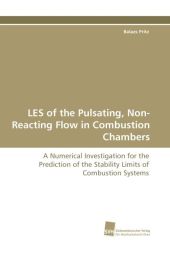 Neuerscheinungen 2010Stand: 2020-01-07 |
Schnellsuche
ISBN/Stichwort/Autor
|
Herderstraße 10
10625 Berlin
Tel.: 030 315 714 16
Fax 030 315 714 14
info@buchspektrum.de |

Balazs Pritz
LES of the Pulsating, Non-Reacting Flow in Combustion Chambers
A Numerical Investigation for the Prediction of the Stability Limits of Combustion Systems
2010. 116 S.
Verlag/Jahr: SÜDWESTDEUTSCHER VERLAG FÜR HOCHSCHULSCHRIFTEN 2010
ISBN: 3-8381-1304-7 (3838113047)
Neue ISBN: 978-3-8381-1304-3 (9783838113043)
Preis und Lieferzeit: Bitte klicken
The lean premixed combustion allows for reducing the production of thermal NOx, therefore it is largely used in industrial combustion. Lean premixed combustors are, however, prone to combustion instabilities. An analytical model was developed by Büchner [14] in order to predict the stability limits of combustion systems. A significant input of this model is the damping ratio, which should be determined from experiment or numerical simulation. In the present work a numerical investigation of the pulsating, non-reacting flow in a model combustion chamber and a coupled system of burner plenum and combustion chamber is presented. The results of the Large Eddy Simulations (LES) are compared with the analytical model and experimental data. The prediction of the damping ratio by LES is very good. It depends, however, on special boundary conditions. By means of the simulations the basic assumptions made by the analytical model could be confirmed. The pulsating flow in the region of the exhaust gas pipe was analyzed and compared with the literature. The major damping mechanisms were identified in the system and a source of combustion instabilities could be localized.
Dr. Balazs Pritz, born in 1976, studied Mechanical Engineering in Budapest, Hungary and in Karlsruhe, Germany. His research focused on the fields of fluid mechanics, computational fluid dynamics and combustion instabilities. He received his PhD in 2009. He currently works as a scientific assistant at the Karlsruhe Institute of Technology.


